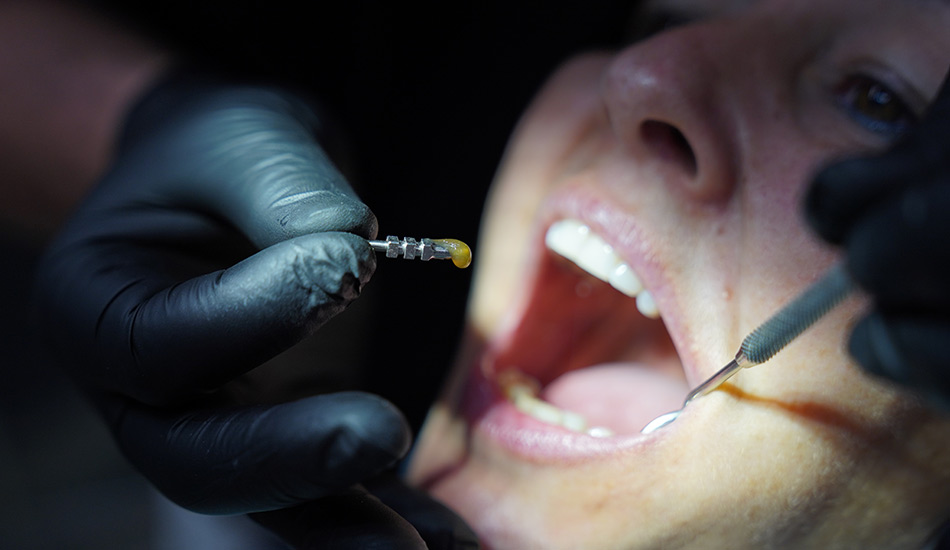Successful placement of a dental implant depends on the adequate amount of bone present, both in height and width. In the presence of extensive jawbone loss or close proximity to anatomical cavities such as the maxillary sinus in the upper jaw and the mandibular canal in the lower jaw, additional interventions are required to increase the volume (quantity) and density of the jawbone, prior to placement of dental implants.

For this purpose, at Dentoria, we use various graft materials and membranes.
Grafts are generally divided into four groups:
-
autografts, which come from the patient themselves, i.e. parts of other bones are taken to be placed in the places where we lack bone for placing a dental implant;
-
allografts, which originate from another person, and have previously been appropriately processed to eliminate the antigenic component and thus avoid rejection of the graft after its transplantation;
-
alloplastic graft materials (synthetic bone graft materials) stimulate the ingrowth of new blood vessels and the colonization of the surrounding bone with necessary cells, which will stimulate the creation of bone by the patient himself in the places where it is missing;
-
xenografts are obtained from other species (animals) and by removing the organic components do not cause a rejection reaction in humans. They are gradually resorbed and replaced by the bone of the host (the individual where they are placed);
-
The membranes used in these procedures serve to limit the defect in which bone is to be created, to keep the graft material in place and to prevent other tissues from ingrowing into the area where bone formation is to be stimulated. They can be of various origins. At Dentoria, Dr. Ertan very often uses PRF membranes, which come from the patient's own blood. Therefore, they are very safe to use, with no risk of rejection.